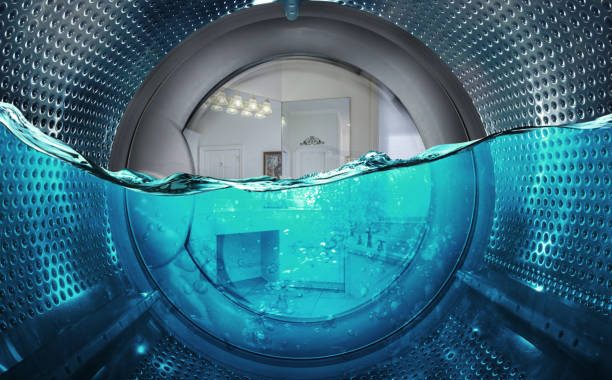It is difficult to overestimate the role of washing machines in everyday life. Unfamiliar with fatigue units diligently perform some routine duties for the owners. Unfortunately, their mechanisms are characterized by periodic failures. Therefore, it is better to find out in advance how to drain the washing machine, so that in case of failure you know what to do.
Regardless of the brand of the washing machine, its technical complexity, and the type of loading, the reasons for draining water from the working tank are absolutely similar. If you exaggerate the situation, it can be described as an interrupted cycle that did not end with the drainage of water through the drain hose into the drainage system, or a failure to spin.
Causes according to which the machine stops draining water can be divided into the following groups:
1. Clogging of internal assemblies and ducts. A sufficiently common case for washing equipment, due to the standard separation of fibers, unraveled stitches, weathered and “dusty” old fabric, getting small trash and foreign objects in the working bodies of the technique.
2. Clogging of outlet ducts. The causes are similar to the above-listed prerequisites. However, in this case, the “plugs” that interfere with the withdrawal of water, have nothing to do with the mechanism of the washing machine. They are confined to the external drain hose and to the adjoining parts of the drain.
3. Technical Faults. This category includes an extensive list of minor malfunctions and serious breakdowns. Anything can happen, from a burnout of the pump winding of the drain system to the manifestation of defects in the sending apparatus.
There is another reason that has nothing to do with either clogs or breakdowns – it’s our inattention. It is possible that there was simply the wrong mode. Suppose, by forgetfulness, you did not switch the “gentle rinse” function after the previous session. If this is the case, it is enough to stop and restart the machine.
It is not necessary to fight a complex technical violation with your own hands. The more so that certified service centers, which supervise the products of certain brands, often refuse to carry out repairs at all after an independent intervention.
However, before deciding to disassemble the machine, it is necessary to find out whether the reason for the refusal to drain was a clogged sewer hose or siphon.
It often happens that the identification of the cause of the refusal of the washing appliance to drain water in the normal mode is accompanied by its simultaneous elimination. It is clear that this happens when a standard clog is removed.
With clogged filters, located in front of the drain pump, and with clogging installed near the pump you can cope independently, without resorting to the costly services of repairmen.
Whether you can find the breakdown on your own or at some stage of the search, calling a handyman is up to you. Not only that in the absence of experience disassembly and assembly of washing machines is better to limit the external examination and search for simple damage, and then call our master. Chula Vista Appliance Repair Company is proud to offer efficient washing machine repair services in and around San Diego County. Our team of experts is well-equipped and ready to handle all types of washing machine repairs, no matter how complicated they are. We strive to provide excellent repairs using only high-quality replacement parts backed by a manufacturer’s warranty, so you can rely on a washing machine repair technician to fix the problem and make sure your machine will work properly for a long time.
Contact us
(619) 880-5508


